Bowiea gariepensis
Bowiea gariepensis Van Jaarsv. (= Bowiea volubilis Harv. Ex Hook.f. subsp. gariepensis (Van Jaarsv.) Bruyns)
Family: Asparagaceae
Common names: white-flowering bowiea, white bowiea, Gariep bowiea (Eng.); lopertjie (Afr.)
Introduction
Bowiea gariepensis is a summer-deciduous bulbous plant from the lower Orange River Valley in the Northern Cape and southern Namibia, growing singly or in small groups, on south-facing steep rocky screes and outcrops. The soft, fragile, greyish-green, scrambling succulent inflorescence acts as the assimilating organ and appears during autumn, summer and spring. It bears white, scented flowers in autum and winter, that are pollinated by insects. Best grown in containers or hanging baskets.

Fig. 1. Illustration of the type plant of Bowiea gariepensis by the botanical artist Ellaphie Ward-Hilhorst, grown from material collected at Pellaberg, Northern Cape.
Description
Description
Plants bulbous, the bulb usually grows below the substrate but sometimes is partially exposed. The roots are fleshy, whitish, up to 5 mm in diameter. The bulbs globose-depressed, 60-140 mm wide, with scales up to 8 mm thick, and white truncated tunics. The outer tunics covering the bulb are greyish green, withering membranous. The leaves 1 or 2, lanceolate, linear, green, fleshy, about 25 mm long and 10 mm wide, channelled and soon deciduous, appearing before the inflorescence. The inflorescence is succulent, soft and flaccid, up to 1.2 m long and scrambles over the rocks. It has a green stem that acts as the assimilating organ, appearing in autumn. It is much-branched, the branchlets fleshy, rounded and greyish green (glaucous), 20-70 mm long and about 2-5 mm wide. The base of the stem is often flexuous. The flowers are 14-25 mm in diameter, with spreading white lobes, and pedicels 25 to 70 mm long. The floral lobes are oblong lanceolate and about 12 mm long and 3.5 mm broad at the base. Stamens 5 mm long, the ovary conical. The style 6 mm long. Capsule ovoid triangular, 3-locular, 7-8 x 6 mm, thinly coriaceous. The seed is shiny black, slightly egg-shaped, angular, 4 mm long and about 3 mm in diameter, the surface minutely tuberculate.
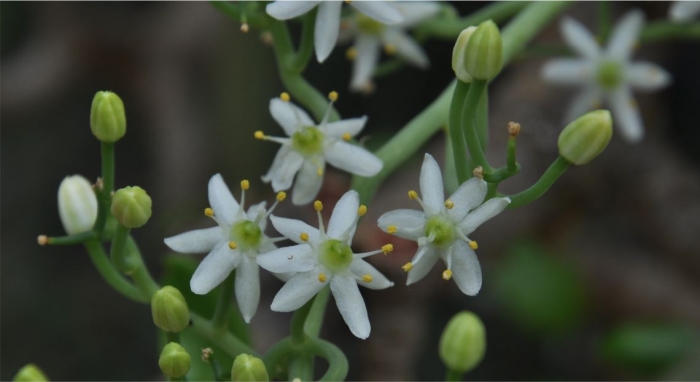
Fig. 2. Flowers of Bowiea gariepensis growing in the Botanical Society Conservatory, Kirstenbosch NBG.
Bowiea gariepensis flowers in autumn and winter (May to July). Seeds ripen in spring and summer and are dispersed by its spreading growth (November to December).
Conservation Status
Status
Plants are widespread although highly localized and not threatened. Consequently it was assessed as Least Concern (LC) in the Red List of South African Plants.
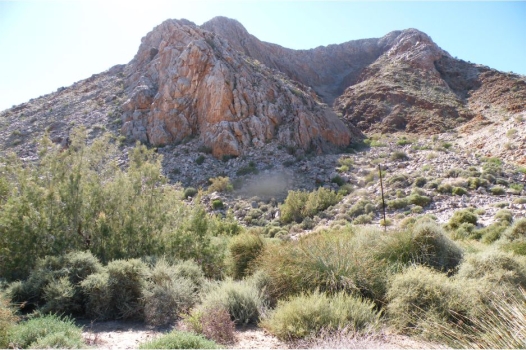
Fig. 3. Levaillantspiek, Bushmanland, Northern Cape, habitat of Bowiea gariepensis.
Distribution and habitat
Distribution description
The white-flowering climbin onion is only known from the lower Orange River Valley from Pella near Pofadder in the east to the AiAis-Richtersveld Transfrontier National Park in the west. It thus occurs in both southern Namibia and the Northern Cape province of South Africa. It grows on steep south-facing aspects such screes, cliffs and the green assimilating organ scrambling over or pendent from the rocks. The vegetation consists of the Gariep Desert Bioregion of the Desert Biome (Mucina et al. 2006). However when the author inspected the habitat where the plants grow, he found it to have elements of the Succulent Karoo Biome. On the Pellaberg north-west of Pofadder plants grow on steep south-facing upper slopes in vegetation known as the Eastern Gariep Rocky Desert. The plants are locally abundant, sharing their habitat with other succulents such as Adromischus trigynus, Aloe dabenorisana, Brunsvigia gariepensis, Bulbine striata, Crassula exilis subsp. sedifolia, Conophytum fulleri, Conophytum subfenestratum, Crassula muscosa, Crassula garibina, Eriospermum ernstii, Kleinia cephalophora, Larryleachia cactiformis var. felina, Massonia bifolia, Phyllobolus sp., Schwantesia sp., Pelargonium xerophyton and Tylecodon rubrovenosus. Larger plants in its habitat include Aloidendron dichotomum, Boscia albitrunca, Ficus ilicina and Jamesbrittenia ramossima. This upper south-facing steep habitat is cooler, with shady conditions throughout most of the winter. It grows at 300-800 m altitude, in acidic, mineral-poor soil, scattered among quartz rocks and in fissures. The predominantly winter rainfall ranges from ± 50-100 mm per annum. Summer temperatures are high during the day, with an average of ± 30°C. Winters are cooler but frost is absent. Plants of Bowiea volubilis subsp. gariepensis are either solitary or sometimes in larger colonies on screes.
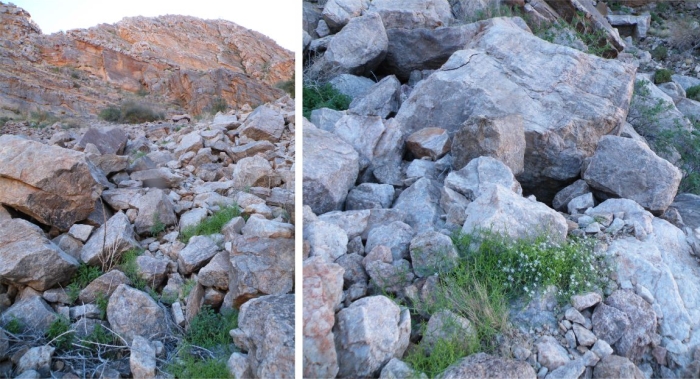
Fig. 4. Bowiea gariepensis growing on a rocky scree at Levaillantspiek, Bushmanland, Northern Cape.
Derivation of name and historical aspects
History
This species was named by the author in 1983 from plants collected on the upper south slopes of Pellaberg near Pofadder in the Northern Cape in August 1982. The name gariepensis pertains to the Orange River; Gariep is the Khoekhoe (Nama) name for the Orange River, the largest and longest river in South Africa and means ‘great river’. The Afrikaans common name was obtained from the local Khoekhoe descendants at Pella. Jan Cloete (Braksam), who the author accidently came across herding his goats, called it lopertjie (meaning runner) an appropriate common name, pertaining to its stems running over the rocks. However the plant was earlier collected by the botanist Kurt Dinter (1868-1945) and geologist Paul Range (1879-1952). Both these collections were made from Pelladrift in the Northern Cape (Gunn & Codd 1881). Walter Wisura, the horticulturist who succeeded Harry Hall at Kirstenbosch, also collected this species, in 1970 at Klein Helskloof in the Richtersveld.
In 1987 Bruyns and Vosa reduced Bowiea gariepensis to a subspecies of the widespread Bowiea volubilis, they considered it to be morphologically similar and determined that it has the same chromosome number as B. volubilis, but because it is geographically isolated, distinct and homogeneous they recognized it as a subspecies. In 2020 the author reinstated Bowiea gariepensis as a distinct species, because of its widely disjunct range and overwhelming morphological differences that are retained in cultivation.
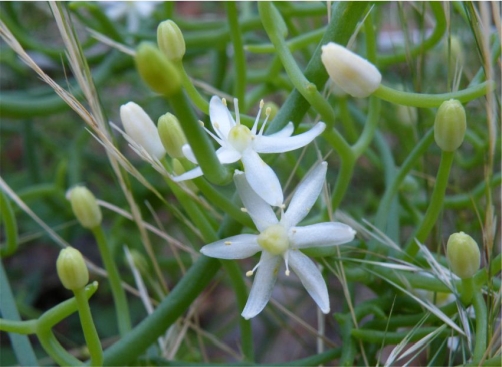
Fig. 5. A close-up of the flower of Bowiea gariepensis, Levaillantspiek, Bushmanland, Northern Cape.
Bowiea volubilis is from the summer rainfall, eastern parts of southern Africa and tropical Africa, with a soft, flaccid, twining, green inflorescence, occurring in savanna vegetation. The flowers of B. volubilis are much smaller, with green lobes, and flowering is in summer. Bowiea gariepensis differs in its distribution, its larger, white flowers, stems that are glaucous, membranous outer tunics on the bulb and it grows and flowers in winter.
The genus name Bowiea honours James Bowie (1789-1869), second horticulturist sent to South Africa by Joseph Banks from Kew, collecting plants for the Royal Botanical Gardens at Kew; he collected Bowiea volubilis in the Eastern Cape (Gunn & Codd 1981). Bowiea belongs to the hyacinth family (Asparagaceae), subfamily Scilloideae, which has a worldwide distribution (Christenhusz et al 2017) and is very well represented in southern Africa.
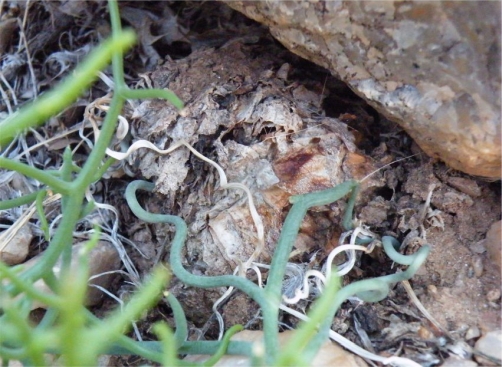
Fig. 6. A close-up of the bulb of the Bowiea gariepensis growing on the south slope of Abbasas Mountain in the Northern Cape.
Ecology
Ecology
Bowiea gariepensis grows on steep, south-facing scree slopes. The bulb grows shallowly, the upper side just exposed or subterranean. The bulb scales are very fleshy and covered with the dry outer tunics. The bulbs are very drought tolerant and simply remain dormant in times of severe drought. The initial solitary leaf is linear, soon becoming deciduous. The flowering stems, which also act as the assimilating organ by taking over the function of photosynthesis, scramble over the rocks and are present only during autumn and winter, taking advantage of the cooler winter growing season. The glaucous, fleshy, flaccid stems conserve moisture, aiding in its tolerance of dry conditions. The plant has several advantages by growing in the cool winter season. These include shorter cool days which hold moisture in the soil for longer periods and less harsh sun. Also, growing on steep south-facing aspects ensures less direct sun but open shade.
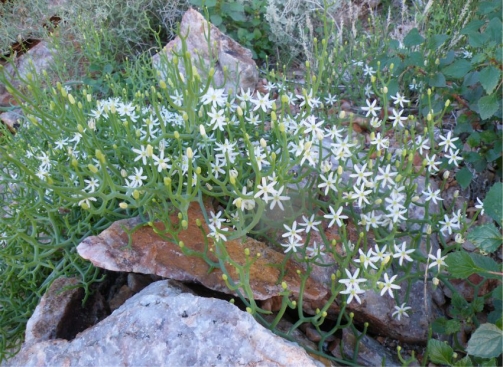
Fig. 7. Bowiea gariepensis in full flower, growing on a rocky scree at Levaillantspiek, Bushmanland, Northern Cape.
The white flowers are clearly visible and strongly scented. They flower in profusion during autumn and winter (May and June) and flowers have been observed to be visited by various species of insects, such as beetles and ants. The capsules ripen in late spring to early summer; the black, shiny, angular oval seeds are released locally and spread by the long extended growth of the plant itself.
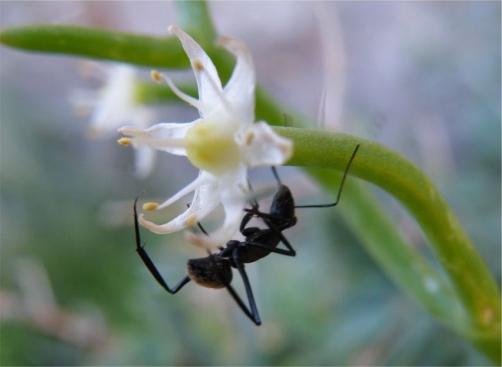
Fig. 8. An ant visiting a flower of Bowiea gariepensis at Levaillantspiek, Bushmanland, Northern Cape.
Uses
Use
The bulb of Bowiea volubilis is poisonous and is known to have caused human deaths, and it is widely used in traditional medicine to treat a range of ailments, however it is not known if Bowiea gariepensis shares any of its properties or if it can be used in the same way.

Fig. 9. Bowiea gariepensis with developing fruits, growing on a rocky scree at Levaillantspiek, Bushmanland, Northern Cape.
Growing Bowiea gariepensis
Grow
Bowiea gariepensis, with its peculiar scrambling growth habit and white star-shaped flowers, attracts attention. The plants are drought tolerant and grow well in Desert and Succulent Karoo gardens and it makes an attractive desert garden plant, especially when covered in white flowers (Van Jaarsveld 2010). Plant the bulb in a shady position, such as a southern aspect of a rockery or boulder. The soil should be slightly acidic, gravely and very well-drained, simulating its scree habitat where the plants grow wild. The plant is summer deciduous, when the inflorescence can be pruned after flowering and fruiting. It starts growing in early autumn, when the flaccid glaucous stems scramble over the rocks. Space should thus be allowed for the plant to grow. When plants are grown away from its desert habitat, it is best grown in a container on a window sill or greenhouse where conditions can be controlled. It also grows well in hanging baskets and the inflorescence will become pendent. As a pot plant the medium should be very well drained and at least half the mixture should preferably consist of coarse gravel, sand or gravel, one quarter of garden loam and the rest compost. Best grown in dappled shade.
Keep dry during the summer when the inflorescence becomes deciduous. Flowers can be pollinated by hand, transferring the male pollen onto a female stigma of a genetically different plant. After fertilization the small capsule swells, matures an the seeds released in late spring and summer (about 4 or 5 seeds per capsule). Cultivated plants can be seen in the Conservatory in Kirstenbosch National Botanical Garden, and at the succulent collection at Babylonstoren Farm near Simondium (Western Cape).
Sow seed in late autumn in a shallow seed tray in a sandy well-drained soil. The suggested mixture consists of 2 parts sand or gravel, 1 part loam and 1 part compost. Cover the seed with a thin layer of sand (1-2 mm thickness). As a rule of thumb seed can be covered 2 times the diameter of the seed. First moisten the medium and once sown the seed should stick to the substrate. Add the sand. Germination is within 3 weeks and once well rooted and large enough to handle, seedlings should be transferred to individual containers.
References
- Bruyns, P.V. & Vosa, C.G. 1987. Taxonomic and cytological notes on Bowiea Hook.f. and allied genera (Liliaceae). Caryologia 40(4): 287-297.
- Christenhusz, M.J.M., Fay, M.F. & Chase, M.W. 2017. Plants of the World, an illustrated Encyclopedia of vascular plants. Kew Publishing, Royal Botanic Gardens, Kew.
- Gunn, M. & Codd, L.E. 1980. Botanical exploration of southern Africa. Balkema, Cape town.
- Mucina, L. & Rutherford, M.C. (eds) 2006. The vegetation of South Africa, Lesotho and Swaziland. Strelitzia 19. South African National Biodiversity Institute, Pretoria.
- Smith, C.A. 1966. Common names of South African plants. Memoirs of the Botanical Survey of South Africa No. 35. Government Printer, Pretoria.
- Van Jaarsveld, E. J. 1983. Bowiea gariepensis: A new Bowiea species from the North-West Cape. Journal of South African Botany 49(4): 343-346.
- Van Jaarsveld, E. J. 1992. Bowiea gariepensis and Bowiea volubilis. British Cactus and Succulent Journal 10: 96-98.
- Van Jaarsveld, E.J. 2010. Waterwise gardening in South Africa and Namibia. Struik, Cape Town.
- Van Jaarsveld, E.J. 2020. In Eggli, U. & Nyffeler, R. (eds). Monocotyledons Volume 2: Families Bromeliaceae to Xanthorrhoeaceae. Springer, Berlin. Page 1244
- Van Jaarsveld, E.J. & Potter, L. 2005. Bowiea volubilis Harv. ex Hook.f. subsp. gariepensis (Van Jaarsv.) Bruyns. National Assessment: Red List of South African Plants version 2020.1. Accessed on 2023/05/09.
- Van Wyk, B.-E., van Oudtshoorn, B. & Gericke, N. 1997. Medicinal Plants of South Africa. Briza Publications, Pretoria.
Credits
Ernst van Jaarsveld
Kirstenbosch National Botanical Garden (Retired 2015)
Babylonstoren Farm
Extraordinary senior lecturer and researcher,
Department of Biodiversity and Conservation, University of the Western Cape
May 2023
Plant Attributes:
Plant Type: Bulb, Scrambler, Succulent
SA Distribution: Northern Cape
Soil type: Sandy
Flowering season: Autumn, Winter
PH: Acid, Neutral
Flower colour: White
Aspect: Full Sun, Morning Sun (Semi Shade), Afternoon Sun (Semi Shade)
Gardening skill: Average
Special Features:
Horticultural zones







Rate this article
Article well written and informative
Rate this plant
Is this an interesting plant?
Login to add your Comment
Back to topNot registered yet? Click here to register.